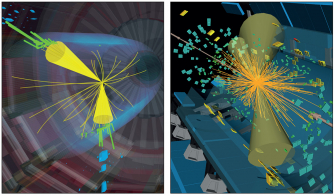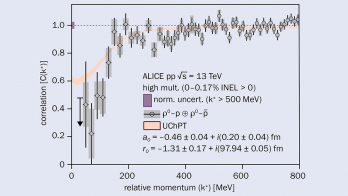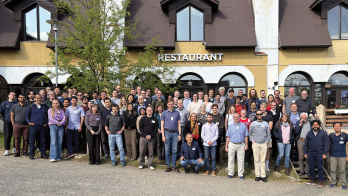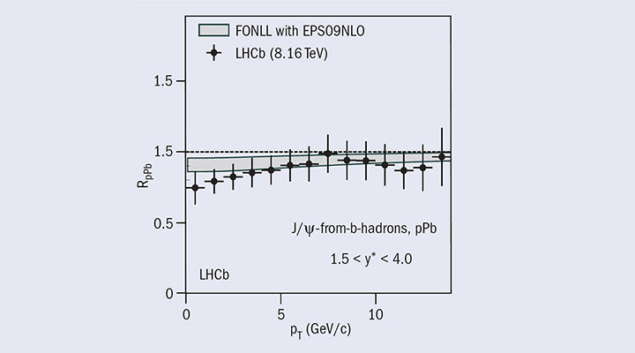
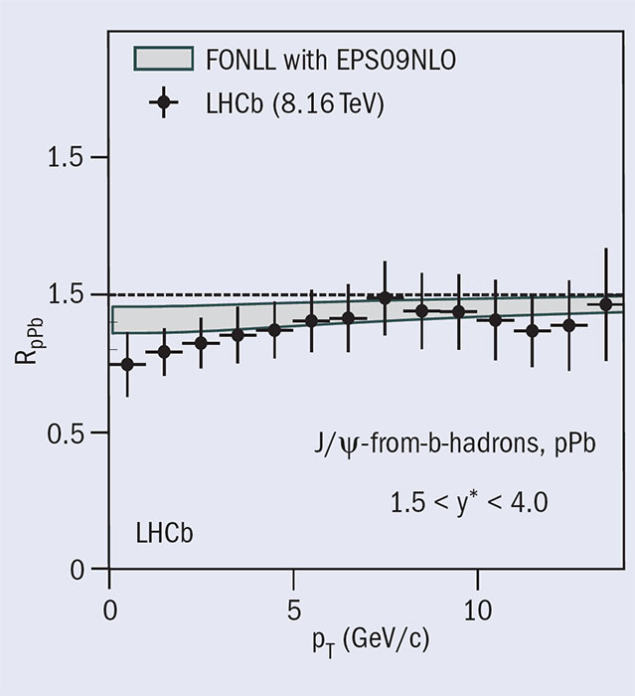
In 2016 the LHC collided protons and lead nuclei for the first time at a centre-of-mass energy of 8.16 TeV per nucleon–nucleon pair. In lead–lead collisions, the formation of the quark–gluon plasma (QGP), a deconfined system where quarks and gluons can move freely, is a subject of intense studies at the LHC. By contrast, proton–lead collisions represent the best available environment to quantify nuclear effects that are not related to the QGP.

Our knowledge of the partonic content of nuclei suffers from large uncertainties, particularly at low momentum where large modifications of the partonic flux with respect to the free nucleon are expected. The particular design of the LHCb experiment, with its fully instrumented forward acceptance, offers a unique opportunity to access production processes in which one parton carries a momentum fraction of the incoming nucleon inside the lead nucleus of approximately 10–5–10–4 (covering the proton fragmentation region) and 10–3–10–1 for the lead fragmentation region.
The LHCb collaboration recently submitted the first paper at the LHC based on results obtained with the 2016 proton–lead data sample. This measurement of J/ψ production profits from an integrated luminosity about 20 times larger than the proton–lead sample collected by LHCb during the 2013 run. The nuclear modification factor RpPb as a function of transverse momentum is shown in the figure: J/ψ mesons produced in the interaction point (prompt) are found to be suppressed by about a factor two at low transverse momentum, while RpPb approaches unity at higher transverse momenta. Those arising from the decays of long-lived beauty hadrons (non-prompt) follow a similar pattern. This is the most precise measurement to date of inclusive beauty production in nuclear collisions.
The results can be compared with perturbative QCD calculations based on collinear nuclear parton distribution functions (nPDFs) or with calculations within the colour-glass condensate (CGC) framework, which takes into account gluon saturation. The large uncertainties on the nPDFs compared to the data show the importance of new experimental data to better constrain them, while the CGC-based calculation reproduces the observed dependence accurately.
The large 2016 data set will allow for a precise study of heavy-flavour production with different hadron species, and also of cleaner electromagnetic/electroweak probes. These measurements will test which frameworks adequately describe the modification of the partonic flux in nuclear collisions. Additionally, other mechanisms such as partonic energy loss due to gluon radiation, which is very relevant for nuclear modifications.





